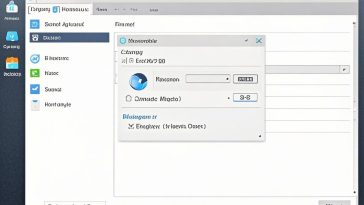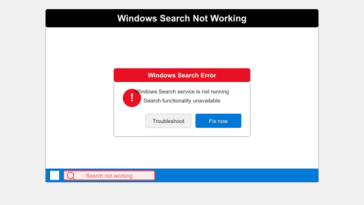Introduction
Training manuals are essential tools for onboarding new employees, standardizing processes, and ensuring consistency across an organization. They serve as comprehensive guides that provide step-by-step instructions, best practices, and relevant information to help individuals perform their roles effectively. Microsoft Word is a powerful and versatile word processing software that offers a wide range of features to create professional and visually appealing training manuals.
In this tutorial, we’ll explore the process of creating a training manual in Microsoft Word, from planning and structuring the content to formatting, enhancing with visuals, and finalizing the manual for distribution.
- Planning and Structuring the Training Manual
- Defining the Purpose and Audience
- 1. Identifying the goals andobjectives of the training manual
Before starting the creation process, it’s crucial to identify the specific goals and objectives of the training manual. What is the primary purpose of the manual? Is it to provide comprehensive onboarding information, document standard operating procedures, or serve as a reference guide for a particular task or process?
- 2. Understanding the target audience (e.g., newhires, existing employees, customers)
Determine the target audience for the training manual. Is it intended for new hires, existing employees seeking to update their skills, or perhaps customers who need guidance on using a product or service? Understanding the audience’s level of knowledge and familiarity with the subject matter will help you tailor the content and language accordingly.
- Gathering and Organizing Content
- Conducting research and gathering relevant information
Gather all the necessary information and resources that will be included in the training manual. This may involve interviewing subject matter experts, reviewing existing documentation, observing processes firsthand, and consulting industry best practices.
- Outlining the topics and subtopics
Organize the content by creating an outline that breaks down the main topics and subtopics. This structure will help ensure a logical flow and make it easier for readers to navigate the manual.
- Determining the flow and sequence of information
Determine the most effective sequence for presenting the information. Consider starting with an overview or introduction, followed by more detailed sections or procedures. Arrange the content in a way that builds upon previously covered concepts or follows a natural progression.
- Setting up the Document in Microsoft Word
- Creating a New Document or Using a Template
- Starting from a blank document
In Microsoft Word, you can start with a blank document by launching the application and creating a new file. This option gives you complete control over the layout and formatting from the beginning.
- Exploring pre-designed templates for training manuals
Alternatively, Word offers a wide range of pre-designed templates specifically for training manuals. These templates can save time and provide a professional starting point with consistent formatting and layout elements.
- Applying Consistent Formatting
- 1. Choosing appropriate styles forheadings, body text, and captions
Establish a consistent formatting style for different elements of the manual, such as headings, body text, and captions. Word’s built-in styles feature allows you to easily apply and update formatting across the entire document.
- 2. Setting up page layout, margins, andorientation
Configure the page layout settings, including margins, page size, and orientation (portrait or landscape), to ensure a clean and professional appearance. This will also help maintain consistency throughout the manual.
- 3. Inserting header andfooter elements (e.g., page numbers, title)
Add header and footer elements, such as page numbers, the title of the manual, and other relevant information, to provide a polished look and improve navigation.
III. Writing and Formatting the Content
- Developing Clear and Concise Procedures
- Using active voice and simple language
When writing the content for the training manual, use an active voice and straightforward language to ensure clarity and ease of understanding. Avoid jargon or overly complex terminology unless it is necessary and explained properly.
- Breaking down complex tasks into step-by-step instructions
For procedural or task-based sections, break down the process into clear and concise step-by-step instructions. This will make it easier for readers to follow along and execute the tasks accurately.
- Incorporating visual aids (e.g., screenshots, diagrams)
Enhance the written instructions by incorporating visual aids, such as screenshots, diagrams, or illustrations, to provide a better understanding of the processes or concepts being explained.
- Formatting for Readability
- Utilizing headings and subheadings
Use headings and subheadings to organize and structure the content in a logical and visually appealing manner. This will help readers quickly locate specific sections and navigate the manual more efficiently.
- Creating numbered or bulleted lists
For step-by-step instructions or lists of information, use numbered or bulleted lists to improve readability and clarity. These formatting elements make it easier for readers to follow along and comprehend the information.
- Applying consistent font styles and sizes
Maintain consistency in font styles and sizes throughout the manual. This not only enhances the professional appearance but also improves readability and provides a cohesive experience for the reader.
- Enhancing the Training Manual
- Adding Visual Elements
- Inserting images, screenshots, and diagrams
Incorporate relevant images, screenshots, and diagrams to supplement the written content and provide visual aids for better understanding. These visual elements can be particularly useful for illustrating complex processes or concepts.
- Formatting images and captions
Ensure that images and diagrams are properly formatted and sized for optimal visibility. Additionally, include clear and descriptive captions to provide context and explanations for each visual element.
- Creating tables and charts
If applicable, consider using tables and charts to present data or information in a structured and visually appealing manner. Tables can be useful for displaying step-by-step procedures or comparing different options, while charts can effectively convey numerical data or trends.
- Incorporating Interactive Features
- 1. Using cross-references andhyperlinks
Enhance the navigation and usability of the training manual by incorporating cross-references and hyperlinks. Cross-references allow readers to easily navigate to related sections within the document, while hyperlinks can link to external resources or supplementary materials.
- 2. Creating bookmarks anda table of contents
Word’s bookmark feature can be used to create anchors within the document, allowing readers to quickly jump to specific sections or procedures. Additionally, generate a table of contents to provide an overview of the manual’s structure and contents.
- 3. Adding comments andnotes for further explanation
Utilize Word’s comments feature to add additional notes, explanations, or clarifications within the document. These comments can be particularly useful for providing context or addressing specific queries that may arise during the training process.
- Finalizing and Distributing the Training Manual
- Reviewing and Proofreading
- Checking for consistency, accuracy,and clarity
Before finalizing the training manual, thoroughly review the content to ensure consistency, accuracy, and clarity throughout the document. Verify that all instructions, procedures, and information are up-to-date and correct.
- Collaborating with subject matter experts for feedback
Seek feedback from subject matter experts or experienced professionals within the relevant field. Their insights and recommendations can help identify any gaps or areas for improvement in the training manual.
- Running a spellcheck and grammar check Use Word’s built-in spell check and grammar check tools to identify and correct any spelling or grammatical errors that may have been missed during the writing and editing process.
- Saving and Exporting Options
- Saving the document in different file formats (e.g., .docx, .pdf)
Save the finalized training manual in the appropriate file format, such as .docx (Word document) or .pdf (Portable Document Format). PDF formats can be useful for distribution and ensuring that the formatting and layout remain consistent across different devices and platforms.
- Printing physical copies or distributing electronically
Decide on the distribution method for the training manual. You can print physical copies for in-person training sessions or distribute electronic versions via email, shared drives, or learning management systems.
- Updating and versioning the training manual
Establish a process for regularly updating and versioning the training manual to ensure that it remains current and relevant. This may involve incorporating feedback, addressing changes in processes or procedures, or adding new information as needed.
- Additional Tips and Best Practices
- Maintaining a Consistent Style and Tone
- Establishing a style guide for the training manual
Consider creating a style guide that outlines the formatting, writing style, and tone to be used throughout the training manual. This will help maintain consistency and professionalism across all sections and contributors.
- Ensuring brand and company guidelines are followed
If applicable, ensure that the training manual adheres to the organization’s branding guidelines, including the use of specific colors, fonts, and logos. This will help reinforce the organization’s identity and create a cohesive experience for the reader.
- Repurposing and Updating Content
- Reusing existing content from other sources
If relevant and permitted, consider repurposing existing content from other sources, such as company policies, procedural documents, or industry best practices. This can save time and ensure consistency with established guidelines.
- Establishing a review and update cycle for the training manual
Implement a regular review and update cycle for the training manual to ensure that it remains accurate and up-to-date. This may involve gathering feedback from users, incorporating changes in processes or procedures, and making necessary revisions.
- Considering Accessibility and Compliance
- Ensuring the training manual adheres to accessibility standards
When creating the training manual, consider accessibility standards and guidelines to ensure that the content is accessible to individuals with disabilities or special needs. This may involve using appropriate font sizes, color contrast, and alternative text descriptions for images.
- Addressing any legal or compliance requirements
If the training manual covers topics or processes that are subject to legal or compliance requirements, ensure that the content accurately reflects and addresses these requirements. Consult with legal or compliance professionals as needed.
Conclusion
Creating a comprehensive and effective training manual in Microsoft Word involves careful planning, structuring, and formatting of the content, as well as incorporating various enhancements and interactive features to improve usability and engagement.
Throughout this tutorial, we’ve covered the steps involved in planning and structuring the training manual, setting up the document in Word, writing and formatting the content, enhancing with visuals and interactive elements, finalizing and distributing the manual, and exploring additional tips and best practices.
Remember that creating a training manual is an iterative process, and it’s essential to collaborate with subject matter experts, gather feedback, and regularly update the content to ensure its relevance and accuracy.
Microsoft Word offers a powerful set of tools and features to create professional and visually appealing training manuals. Don’t hesitate to experiment with different formatting options, templates, and interactive elements to create a training manual that effectively meets the needs of your audience.
By following the guidelines and best practices outlined in this tutorial, you’ll be well-equipped to create comprehensive and user-friendly training manuals that support the onboarding, training, and professional development of your team or organization.






